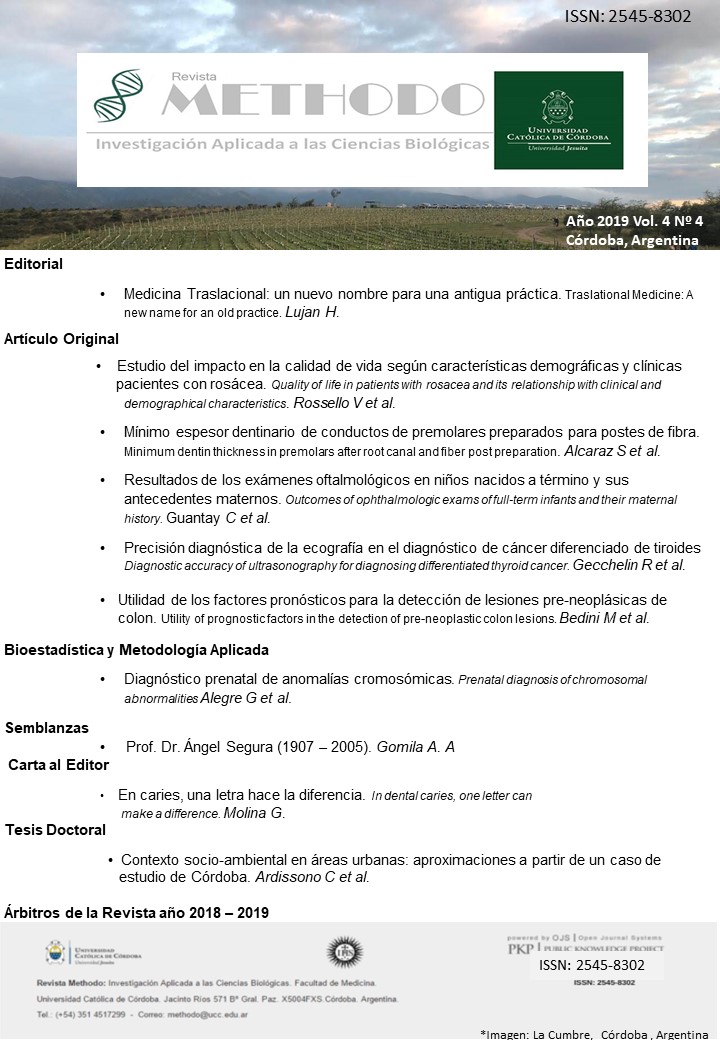Quality of life in patients with rosacea and its relationship with clinical and demographical characteristics
Keywords:
Rosacea, Quality of life.Abstract
INTRODUCTION: Rosacea is a chronic inflammatory disease that mostly affects the mid facial area and
is manifested clinically by the presence of transient or persistent erythema, papules and pustules, on some
occasions dermal edema with fima formation is established. It is classified in different subtypes according
to the severity and clinical characteristics. The impact of this disease on the quality of life of patients has
been studied in different countries; however, there is scarse data regarding this issue in Latin America,
particularly in Argentina.
OBJECTIVES: To determine the impact of rosacea on the quality of life of patients at the Reina Fabiola
University Clinic in 2018. To describe the demographic characteristics of patients with rosacea. To analyze
the variables associated with quality of life.
MATERIALS AND METHODS: This is an observational, cross-sectional, analytical study. We included
all patients with diagnosis of rosacea who attended the Dermatology Service in 2018, who had classic forms
of rosacea (according to the GILER), with exclusively facial involvement and in patient older than 16 years
old. We analyzed the following variables: age, sex, phototype, occupation according to sun exposure,
previous treatment, quality of life as per the Dermatology Life Quality Index (DLQI), subtype and severity
of rosacea. The relationship between the DLQI categories with the categorical nominal variables was
analyzed with Chi-square test and for the continuous variables the ANOVA test was used. A p value ≤0.05
was considered significant.
RESULTS: The final sample consisted of a total of 72 patients; the majority being females, with a mean
age of 39.2 + 13.5 years. The majority (52.8%) of the patients presented the erythematous telangiectatic
(ET) subtype of rosacea, phototype II and III, indoor work activity and stated they had not received
previous treatment. According to the GILER classification, most of the patients had a moderate severity
of the disease (54.2%). The DLQI Regarding the DLQI, the majority had mild involvement (6:3.5)
(48.6%), followed by moderate involvement involvement (6:8.1) (19.4%), severe involvement, (6:11.2)
(13.9%) and only few patients had very severe involvement (6:21.0) (1.4%). Sixteen percento of the
patients had no impact on their quality of life (6:0.5). We found no relationship between the DLQI with
the different subtypes of rosacea, the severity of rosacea and demographic variables.
CONCLUSION: In this study, rosacea occurred predominantly in females, mostly with phototype II-III.
The most frequent clinical subtype was ET and the severity according to GILER was mostly moderate. No
statistically significant relationship was found between the DLQI with the clinical subtypes and severity of
rosacea, as well as with demographic variables. These data is coincident coincide in many aspects with the
published literature.




















